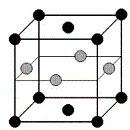Department of Physics and Astronomy: Publications and Other Research

Ralph Skomski Publications
Document Type
Article
Date of this Version
May 2007
Abstract
The thermal stability of the information stored in magnetic recording media is determined by a complex hierarchy. The leading consideration is the static or zero-temperature magnetization reversal complemented by the intrinsic temperature dependence of the micromagnetic parameters. Thermally activated Arrhenius (or Néel-Brown) processes modify the reversal by realizing paths close to static reversal, whereas “giant fluctuations” corresponding to reversal fields much higher than the nucleation field can safely be excluded. Thermally activated reversal in very thin elongated nanoparticles limits the thermal stability of magnetic recording media but degenerates into coherent rotation as the temperature is lowered, thereby reconciling micromagnetism and thermodynamics. A particularly complicated situation is encountered in alloys, where sublattices containing heavy transition-metal atoms act like earthquakes that modify the energy landscape.


Comments
Published in JOURNAL OF APPLIED PHYSICS 101, 09B104 2007. © 2007 American Institute of Physics. Used by permission.